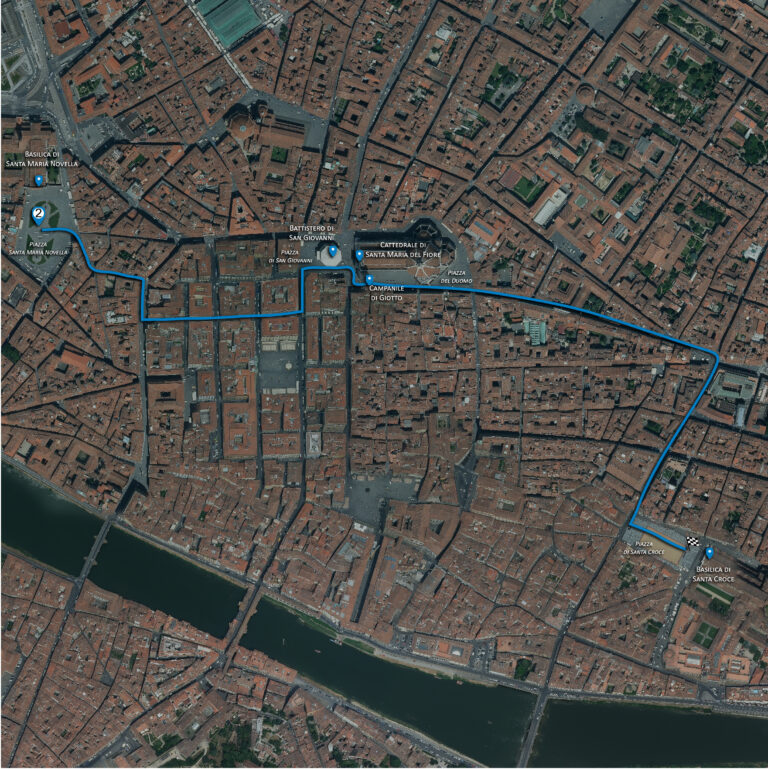Walk N. 2 - Searching for three-colours decorated churches

The suggested walk starts from the Basilica di Santa Maria Novella (stop 1), located in the homonymous square, continues in Piazza del Duomo where we can visit the Cattedrale di Santa Maria del Fiore (stop 2) and ends in Piazza Santa Croce where it is possible to admire the Basilica di Santa Croce (stop 3).
These three churches display an external revetment realized through the use of three colours, white, red and green. The used rocks are Apuan Marble, red limestones (Red Ammonitic and Red Marly Limestones) and Serpentinite, respectively.
In the façade of the Basilica di Santa Maria Novella, the coating of the tombs is in white Montagnola Senese Marble; the jambs of the side doors are in Gabbro; the claddings are in white Apuan Marble; the decorations are in Serpentinite and Red Marly Limestone; the pillar columns at the sides of the central door and at the lateral sides are in Serpentinite; in the upper part there is a coating in Alberese Limestone; the base of the façade is in Pietraforte Sandstone. The bell tower, the side parts and the back are in Pietraforte Sandstone. The lunettes above the doors are in fresco.
The Cattedrale di Santa Maria del Fiore is covered by white Apuan Marble, Red Marly Limestone and Red Ammonitic Limestone, and green Serpentinite. The base of the cathedral is in Pietraforte Sandstone like the steps of the north side. The cupola is covered with red Bricks, the ribs and the lantern are in Apuan Marble; the two-colours coating of the drum consists of Apuan Marble and Serpentinite; the upper part of the drum is in Pietraforte Sandstone.
The claddings, the statues, and the decorations on the façade of the Santa Croce basilica are realized in white Apuan Marble; the frames and decorative strips at the base of the façade are in Serpentinite; the decorations are made of Sassetta Ammonitic Red Limestone and Red Marly Limestone; the coats of arms are in white and yellow Montagnola Senese Marble. The side parts are in Pietraforte Sandstone and Plaster. The bell tower is in Pietraforte Sandstone.
At the first stop, it is also possible to observe the Campanile di Giotto characterized by the three-colours coating, as the cathedral, and the Battistero di San Giovanni whose coating is in two colours, white and green.
The Campanile di Giotto is revetted with stone material displaying the typical three colours, the white of the Apuan Marble, the red of the Red Marly Limestone and Red Ammonitic Limestone, and the green of the Serpentinite. The sculptures occupying the sixteen niches are made of Apuan Marble.
The external cladding of the Battistero di San Giovanni is characterized by the the white and green colours; it is made of Marble of various provenance (Apuan Marble, Lasa, Pentelico, Imetto, Cipollino, etc.) and Serpentinite; some small decorations are in Red and Green Porphyry (a igneous silica-rich rock, containing large crystals of feldspars and quartz) and Red Marly Limestone. The roof is realized in Apuan Marble; the columns at the sides of the est door are made of Red Porphyry, the other columns are realized in Marble Imetto (with capital in Serpentinite) and in Serpentinite (with capital in Marble Imetto).